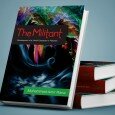By Mahtab Bashir –
Najam-ul-Hassan Kazmi: Preserving the classical while developing the contemporary
Miniature paintings have been appreciated by connoisseurs over the centuries. Made on small canvasses of cloth and papers, this type of art mainly evolved in the medieval age and was especially used to depict the royal life of the Mughal dynasty.
Rajasthan has been the leading Indian state with regards to miniature painting and many different miniature art schools do exist in the regions of Jodhpur, Jaipur, Kangra and Mewar even today.
Contemporary miniature often claims to have an unbroken continuity with the classical tradition, but it also has a new way of celebrating hybridity and cosmopolitanism. Even though there is no clean break from tradition as such in contemporary miniature, its playful and ironic potential is certainly a new development.
Syed Najam-ul-Hassan Kazmi is a renowned miniature artist who is working passionately to enliven and reinvigorate Mughal miniature art not just in Pakistan but beyond the country as well. Using relief, tea, vassli, and bark (chaal paper) techniques, the 40-year old artist has produced unique and captivating miniature pieces that instantly transport viewers to a magnificent past and reminds them of the Mughal dynasty remembered for its majestic facades, sprawling courtyards inhabited by exotic creatures, lovely flora and fauna, jewel-encrusted regalia, romantic characters and culture of refinement.
Kazmi’s compositions are powerful. Elaborate and meticulous in details, they captivate the attention of the viewer and generate a powerful perceptual pull on them. While dealing with the contemporary form of miniature paintings, Kazmi is able to infuse a new spirit in each of his pieces through a variety of themes and subjects.
“I find my work sacred because it draws its inspiration from divine work, as God has drawn wonderful paintings all over the world,” said the humble and cheerful artist said while talking to Pique.
Kazmi decorates his art pieces with lavish use of silver and gold. He is an innovator in this art form as probably no artist before him has used the relief and the tea techniques and especially experimented with tree bark the way he has. He also prepares his own colours and calls them ‘vegetable colours’. Thus, both the materials that he uses and the techniques that he employs bear the stamp of his individuality.
Even though he has a keen interest in developing innovative techniques and wants to see the evolution and growth in contemporary miniature, the artist has quite a few reservations about the work of youngsters and contemporary miniature artists. “Now, the artists are making fools out of art lovers by producing so-called miniature art pieces that cannot be classified as miniature at all. A leg there, an arm there, and a few patches of cloth are strung together by anybody and everybody and then labeled ‘contemporary miniature art.’ This is is not real art. Real art is the blood and toil of an artist.”
The works of Kazmi, who is a recipient of the ‘Tamgha-e-Imtiaz’, are known for their careful execution. His new works boast outstanding graphic output and range. The subject of his paintings varies from the Mughal courtyard to the romance between the kings and queens. But whether he is painting the Taj Mahal or a scene between Shah Jehan and Mumtaz, it is painted with equivalent authenticity and detail. The costumes, ornaments, setting and movement and each and every element in a painting pleases the art lovers equally.
“Contemporary miniature often claims to have an unbroken continuity with the classical tradition, but it also has a new way of celebrating hybridity and cosmopolitanism. Even though there is no clean break from tradition as such in contemporary miniature, its playful and ironic potential is certainly a new development”
Kazmi has the ability to convey the essence of the natural world in miniature art. His works contain all the elements that must be present in great miniature art – good composition, interesting content, balance, colour and exquisite detail. “I have also introduced calligraphy with figurative art in miniature,” Kazmi said while drawing a long puff on his cigarette. The artist has also set up ‘Kashmir Art & Craft Institution’ in the federal capital to impart this ancient art to over 600 students.
Kazmi stresses that it takes a long time to produce a master miniature piece. “I enjoy drawing each and every thing that makes a part of the painting,” he said.
Born in picturesque Skardu, Baltistan, Kazmi has won many awards and distinctions over the years including the Tamgha-e-Imtiaz in recognition of his exquisite miniatures in the traditional style. He has received ‘Colours of Democracy’ award recently from Fehmida Mirza (Speaker, National Assembly) in recognition of his meritorious services to art.
He obtained his B.A. in Fine Arts from Kashmir but his skill was polished by tutelage from ‘ustads’ and interactive learning with the masters Syed Najam Kazmi met during his visits to Iran and Kashmir. He is committed to the preservation of the Kashmiri heritage and handicrafts and is an expert in the techniques of Papier Mache.
 Kazmi has represented Pakistan on several forums, including the OIC conference at Ispahan, Iran. He was awarded the seal of excellence for his innovative craftsmanship in Papier Mache handicrafts 2008 by UNESCO South Asian programme.
Kazmi has represented Pakistan on several forums, including the OIC conference at Ispahan, Iran. He was awarded the seal of excellence for his innovative craftsmanship in Papier Mache handicrafts 2008 by UNESCO South Asian programme.
He has participated in group exhibitions of miniature painting and Papier Mache crafts held in Germany, France, Iran, India, Gulf, Great Britain and Pakistan. In Kazmi’s work, one witnesses a vibrant portrayal of the Mughal era in all its glory.
Nomad Gallery Director Nageen Hyat while commenting on the astounding delicate work of Kazmi said that his work was very experimental and that it brimmed with playful images and contemporary topics. “The artist is highly respected for his excellent renditions and commitment to his field of choice. He is a prolific expert in miniature paintings in the Mughal and Persian art expression and he has also gained proficiency in the traditional craft of Papier Mache,” she said. She also added that Kazmi was endowed with an extraordinary aesthetic sense with regards to combining colours in miniature art.
Kazmi’s works are a flight of fancy; the traditional style of miniature painting combined with minutely detailed brushwork and contemporary techniques transport one into another world. Talking about his recent works, he explained that he had used simple tea technique on handmade paper (washed with tea).
As an artist dedicated to his work, Kazmi says his aim is to uphold the glorious heritage of the past. He said, “We are the inheritors of one of the most vibrant and affluent cultural heritages. We need to focus on our culture and make an effort to preserve its magnificence.”
Kazmi, however, dejectedly said it is unfortunate that not a single art gallery or institution exists in Gilgit-Baltistan (GB). “In the schools that I’ve visited, I’ve observed that there is no drawing teacher in the faculty. How could a child learn without knowing the basics of art and nature?” he lamented.
Not only is he dejected by the lack of art education and instruction, he is also saddened by the way state neglect and apathy with regards to promoting art in general and preserving miniature painting in particular. “We have a rich indigenous culture. But it can only be promoted if we become strong economically. We need the ‘pen’ instead of the ‘bomb’, he concluded.































































































